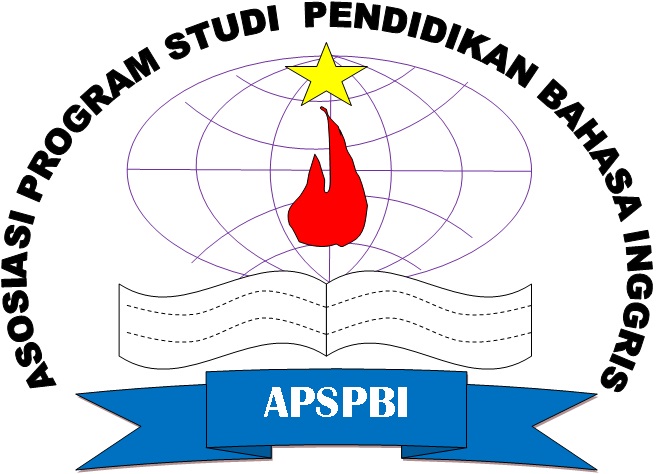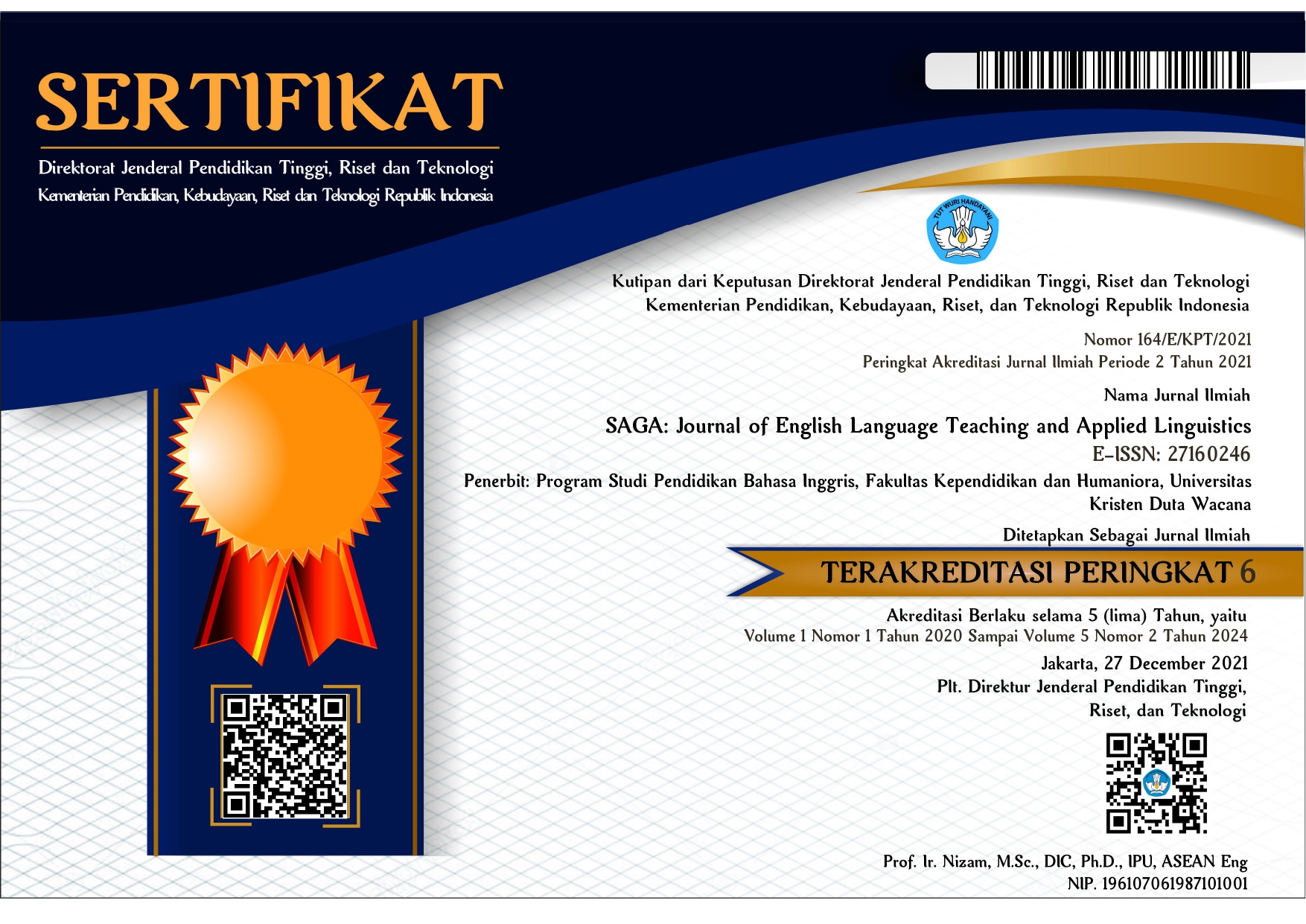EFL Students’ Perceptions on Flipped Learning in an English Grammar Class
DOI:
https://doi.org/10.21460/saga.2023.42.157Keywords:
Students’ Perception, Flipped LearningAbstract
The objective of this research was to investigate EFL students’ perceptions on the implementation of flipped learning. Employing a concurrent mixed method of data gathering techniques, this research was conducted in an English Literature Study Program of a private university in Padang, West Sumatera Province. The participants were fourth-semester students in an intermediate English grammar who were encouraged to actively participate in the class. The flipped instruction was implemented in four meetings. At the end of the sessions, a Google form questionnaire was handed out. Quantitative and qualitative data analysis found out that most students expressed positive perceptions on flipped learning, as indicated by its efficacy to facilitate preparation for offline sessions, making them more active, and completing grammar exercises better. Overall, flipped learning was acknowledged to be effective for English grammar in this study, despite few suggestions for the lecturers to assist them understanding material better.
References
Albert, M. & Beatty, B. J. (2014). Flipping the Classroom Applications to Curriculum Redesign for an Introduction to Management Course: Impact on Grades. Journal of Education for Business, 89(8), 419-424, https://doi.org/10.1080/08832323.2014.929559
Almodaires, A.A., Alayyar, G.M., Almsaud, T.O., & Almutairi, F. M. (2018). The Effectiveness of Flipped Learning: A Quasi-Experimental Study of the Perceptions of Kuwaiti Pre-Service Teachers. International Education Studies, 12(1), 10–23. https://doi.org/10.5539/ies.v12n1p10
Ayçiçek, B., & Yelken, T. Y. (2018). The Effect of Flipped Classroom Model on Students’ Classroom Engagement in Teaching English. International Journal of Instruction, 11(2), 385–398. https://doi.org/10.12973/iji.2018.11226a
Ary, D., Jacobs, L. C., & Sorensen, C. K. (2010). Introduction to research in Education (8th ed.). Belmont, CA: Wadsworth Cengage Learning.
Bergmann, J.; Sams, A. (2012). Flip Your Classroom: Reach Every Student in Every Class Every Day. International Society for Technology in Education: Eugene, OR, USA.
Danker, B. (2015). Using Flipped Classroom Approach to Explore Deep Learning in Large Classrooms. IAFOR Journal of Education, 3(1),171–186. https://doi.org/10.22492/ije.3.1.10
Egbert, Joy & Herman, David & Lee, Hyungyung. (2015). Flipped Instruction in English Language Teacher Education: A Design-based Study in a Complex, Open-ended Learning Environment. 19.
El-Bassuony, D.J. (2016). The Effectiveness of Flipped Learning in Developing English Grammatical Performance of Underachieving Language Learners at The Secondary Stage.
Fulton, K. (2012). Upside Down and Inside Out: Flip Your Classroom to Improve Student Learning. Learning & Leading with Technology, 39, 12-17.
Graham, C. & Woodfield, W. & Harrison, J.B. (2012). A Framework for Institutional Adoption and Implementation of Blended Learning in Higher Education. The Internet and Higher Education, 18. 4-14.
Gilboy, M. & Heinerichs, S. & Pazzaglia, G. (2014). Enhancing Student Engagement Using the Flipped Classroom. Journal of nutrition education and behavior. https://doi.org/47. 10.1016/j.jneb.2014.08.008.
Julien, H. (2008). Survey research. In L. M. Given (Ed.). The Sage Encyclopedia of Qualitative Research Methods (Vol 1 & 2). Thousand Oaks, CA: Sage.
Musdi, E., Agustyani, A.R.D., & Tasman, F. (2019). Students’ Perception toward Flipped Classroom Learning. Journal of Physics: Conference Series, 1317(2019), 1–6. https://doi.org/10.1088/1742-6596/1317/1/012132
Pape, L., Sheehan, T., & Worrell, C. (2012). How to Do More with Less: Lessons from Online Learning. Learning & Leading with Technology, 39(6), 18-22.
Reidsema, Carl & Hadgraft, R., & Kavanagh, L. (2017). Introduction to the Flipped Classroom. https:// doi.org/10.1007/978-981-10-3413-8_1.
Richter, T. & McPherson, M. (2012). Open Educational Resources: Education for the World? Distance Education 33. 201-219. https://doi.org/10.1080/01587919.2012.692068.
Shyr, W. J., & Chen, C. H. (2018). Designing a Technology-enhanced Fipped Learning System to facilitate students’ self-regulation and performance. Journal of Computer Assisted Learning, 34(1), 53–62. https://doi.org/10. 1111/ jcal. 12213
Yang, C. C. R. (2017). An investigation of the use of the Flipped Classroom Pedagogy in secondary English language classrooms. Journal of Information Technology Education: Innovations in Practice, 16, 1–20
















